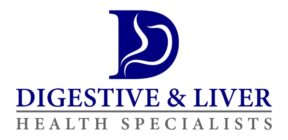In Crohn's disease, maintaining an appropriate diet helps to keep the disease course stable and to prevent flares. The information in this article complements your knowledge of dietary factors that can positively affect your illness. This information is for stable patients with Crohn's disease. Please note that the information in this article does not apply to patients who are in a Crohn’s flare or who have uncontrolled disease[1]
Risk of Crohn's disease
Crohn's disease can worsen if a person eats:
- A low fiber diet
- A high amount of saturated fats
- High meat or protein diet
Data suggests that CD patients should not consume proteins in large amounts. Patients should consume 60-70 grams of proteins a day. Consuming more protein can be harmful.
Saturated fats are present in processed meat, milk, chicken skin, and butter. The consumption of these fats can increase the risk of CD. Unsaturated fats are commonly recommended because they lower the risk of coronary artery disease. Unfortunately, unsaturated fats also contribute to CD, so it is crucial to avoid them as well [2].
Studies also indicate that people who have a low intake of plant fiber are most likely to get CD.
Beneficial Diet in Crohn's Disease
These types of foods can be beneficial for the CD patient

Animal Protein
Amino acids are the building blocks of proteins. Proteins are broken down into amino acids in our bodies. The gut then absorbs these amino acids. These amino acids are again converted into specific proteins when needed. Fifty grams of animal protein is enough to supply the daily requirement of essential amino acids to the body. [3]
Fibers
Fibers are present in every vegetable, grain and fruit. There are two types of fibers: soluble and insoluble. Both are essential in CD. Insoluble fiber is so named because it does not dissolve in water and passes through the gut unchanged. The most common insoluble fiber is wheat fiber. Soluble fibers dissolve in water. These are also called prebiotics. Prebiotics increase the number of good bacteria in the body, and by doing so, produce multiple health benefits. Good gut bacteria use prebiotics as food. The daily recommended intake of fiber is 30 grams or more for men and 25 grams or more for women. Luckily, tracking daily fiber intake is relatively straightforward because the amount of fiber is present on the label of every packaged food [4].
Fruits
According to studies, fruits have a protective effect for Crohn's patients. This is because fruits contain both soluble and insoluble fibers. Therefore, it is essential for Crohn’s patients to have adequate daily portions of fruit.
Fluids and liquids
Diarrhea is a prominent symptom in Crohn’s patients, and so it is important to maintain adequate daily fluid intake to prevent dehydration.
Summary
- Reduce animal protein and consume a balanced and healthy diet
- Reduce animal and vegetable oils and fats
- Take a prebiotic supplement daily
- Increase the intake of fresh fruits
References:
[1] J. K. Hou, B. Abraham, and H. El-Serag, “Dietary intake and risk of developing inflammatory bowel disease: a systematic review of the literature,” The American journal of gastroenterology, vol. 106, no. 4, pp. 563–573, Apr. 2011, doi: 10.1038/AJG.2011.44.
[2] J. R. Thornton, P. M. Emmett, and K. W. Heaton, “Diet and Crohn’s disease: characteristics of the pre-illness diet.,” Br Med J, vol. 2, no. 6193, pp. 762–764, Sep. 1979, doi: 10.1136/BMJ.2.6193.762.
[3] V. A. Jones, E. Workman, A. H. Freeman, R. J. Dickinson, A. J. Wilson, and J. O. Hunter, “CROHN’S DISEASE: MAINTENANCE OF REMISSION BY DIET,” The Lancet, vol. 326, no. 8448, pp. 177–180, Jul. 1985, doi: 10.1016/S0140-6736(85)91497-7.
[4] “Crohn’s Disease Diet - Jackson Siegelbaum Gastroenterology.” https://www.gicare.com/gi-health-resources/crohns-disease-diet/ (accessed Mar. 26, 2022).
[5] “Plate with meat with pan fried polenta and green beans · Free Stock Photo.” https://www.pexels.com/photo/plate-with-meat-with-pan-fried-polenta-and-green-beans-6605904/ (accessed Mar. 26, 2022).

